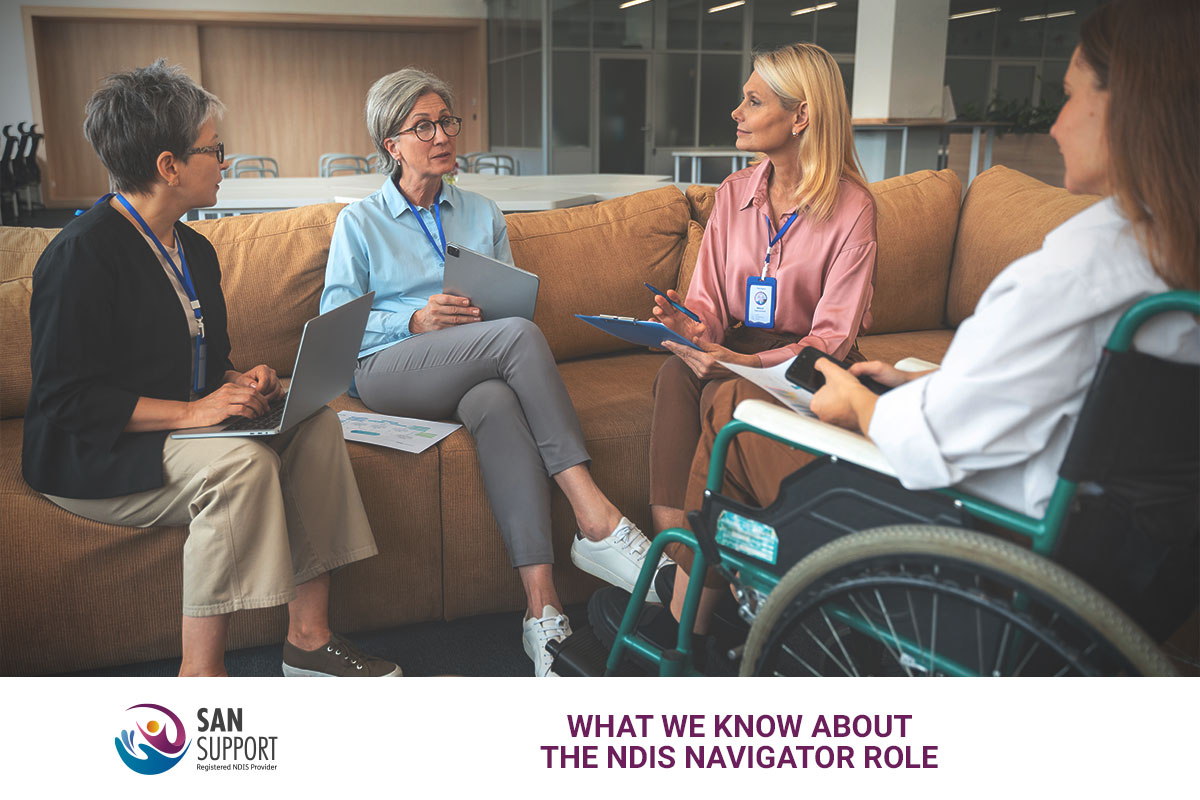
The National Disability Insurance Scheme (NDIS) is evolving. One of the most important changes proposed in the recent NDIS Review is the introduction of the NDIS Navigator role. This new support model aims to simplify how people with disability access services both within and outside of the NDIS.
If you have ever felt confused about who to speak to a Local Area Coordinator, Support Coordinator, Recovery Coach, or someone else you are not alone. The Navigator role could change that by offering a single, clear point of support.
In this article, we will explore what NDIS Navigators are, how they differ from current support roles and what this change could mean for individuals, families and the broader disability support system.
What Is an NDIS Navigator?
An NDIS Navigator is a proposed role designed to help people with disability find and access the right mix of support services. Unlike current roles that require NDIS eligibility or specific funding, navigators would be available to all people with disability, regardless of whether they have an NDIS plan.
The Navigator would:
- Help individuals understand available supports
- Create action plans tailored to their needs
- Provide follow-ups and ongoing support
- Connect people with both NDIS-funded services and mainstream or community supports
Why Is the Navigator Role Being Introduced?
Currently, people with disability receive guidance from several roles:
- Local Area Coordinators (LACs)
- Support Coordinators
- Specialist Support Coordinators
- Recovery Coaches
- Early Childhood Partners
While these professionals are essential, the system can feel fragmented. Many people are unsure who to approach especially if they do not have NDIS funding for support coordination.
The Navigator role is designed to:
- Simplify access to services
- Provide one consistent point of contact
- Ensure people receive support regardless of eligibility
- Offer community-based assistance backed by local knowledge
- Avoid using funds from a participant’s NDIS plan Navigators would be fully funded by the NDIA
Types of NDIS Navigator
To support different needs across the disability community, the NDIS Review recommends introducing a variety of Navigator roles.
General Navigator
Available to people under 65 with disability, this Navigator helps you explore your options, build a support plan and check in regularly to monitor progress.
Specialist Navigator
This Navigator supports people with complex needs who access multiple systems, such as healthcare, justice, or family services. They would likely hold qualifications in areas like social work or allied health.
Psychosocial Recovery Navigator
Designed for individuals with psychosocial disability, this Navigator connects people to recovery-oriented and mental health services regardless of whether they are NDIS participants.
Housing and Living Navigator
This role helps participants explore NDIS housing options, including Supported Independent Living (SIL), Specialist Disability Accommodation (SDA), Independent Living Options (ILO) and Short-Term Accommodation (STA).
Shared Support Facilitator
This facilitator works with people who share services with others, ensuring fair delivery and shared decision-making.
Lead Practitioner
Focused on children and families with complex needs, this Navigator provides holistic support and helps coordinate early intervention and family-based services.
How Are Navigator Different from Support Coordinators?
While both roles focus on connecting individuals with the right supports, their structure and scope differ significantly.
Support Coordinators:
- Only work with NDIS participants
- Help implement NDIS-funded supports
- Are only available if your plan includes coordination funding
- Often have limited time or availability
NDIS Navigator:
- Work with all people with disability, including those not in the NDIS
- Support access to mainstream, foundational and NDIS-funded services
- Are fully funded by the NDIA, not from your plan
- Are designed to build stronger local relationships and offer longer-term guidance
What Will Happen to Support Coordinators and LACs?
You might be wondering, what does this mean for current support roles?
The NDIS Review recommends a five-year rollout for the Navigator model. This approach ensures that:
- Participants do not experience sudden disruptions
- Professionals have time to retrain or transition
- Relationships between participants and providers can continue
Many existing LACs and Support Coordinators are expected to become Navigators. This continuity helps maintain trust and keeps support personalised.
When Will NDIS Navigator Start?
As of now, there is no fixed start date. The government has suggested a gradual rollout over five years. This will likely include:
- Trial programs and pilot testing
- National and regional training for staff
- Ongoing consultation with people with disability, carers and providers
During this time, all existing NDIS support roles remain in place. If you already have a Support Coordinator, there’s no immediate change to your services.
What This Means for You
The NDIS Navigator model is designed to make the support system more accessible, inclusive and community-driven. By reducing confusion and improving guidance, this role can help more people get the services they need without requiring them to navigate the system alone.
Whether you are just beginning your disability support journey, seeking housing, or trying to manage multiple services, a Navigator could be a valuable guide every step of the way.
How SAN Support Can Help
While the Navigator role is still under development, SAN Support is already here to help you find clarity and connection. As the NDIS system evolves, we will continue to offer personalised support that grows with you. Whether you are an NDIS participant or supporting a loved one, SAN Support is ready to walk the journey alongside you now and into the future.
